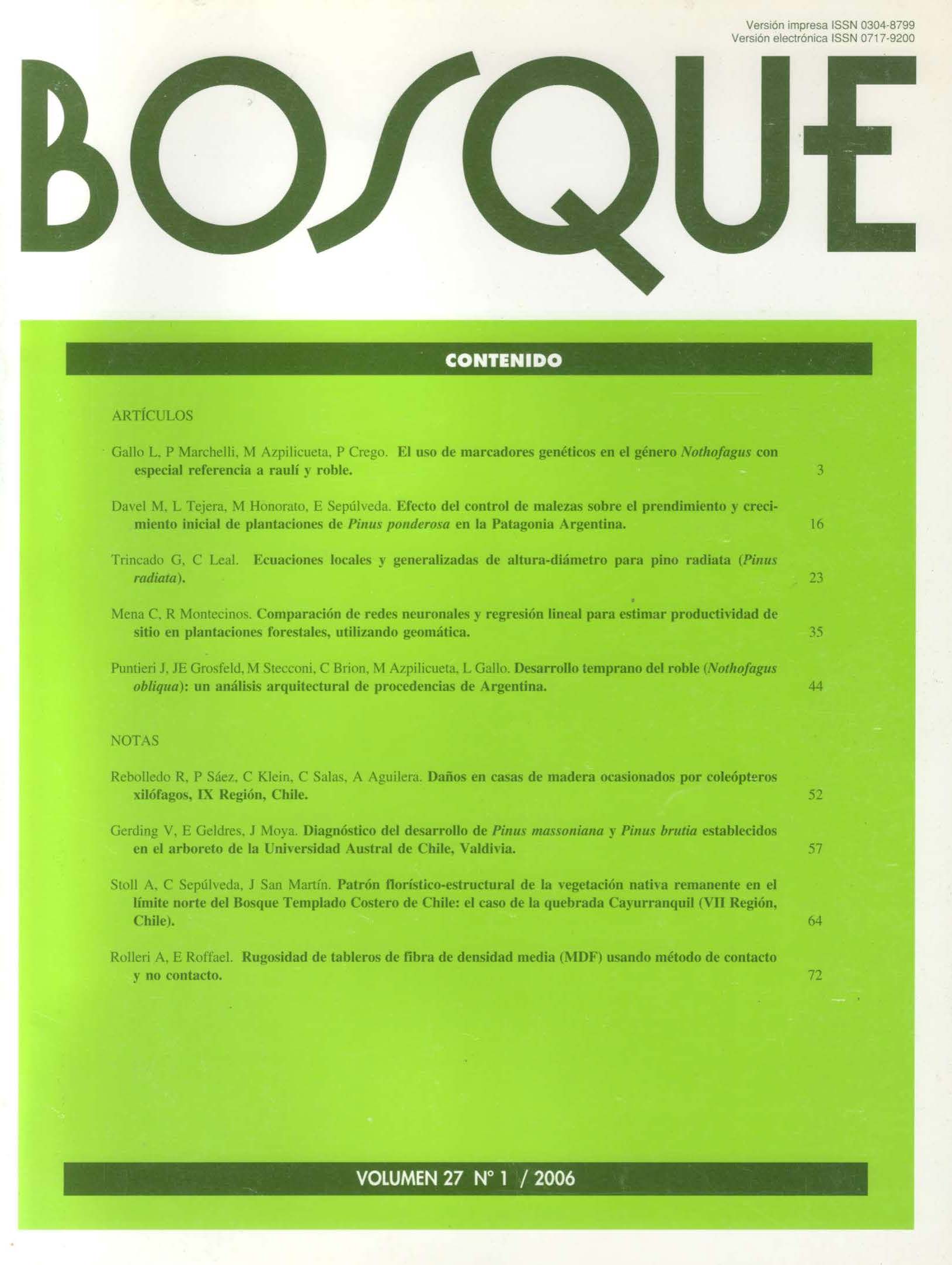Diagnosis for the development of Pinus massoniana and Pinus brutia established in the arboretum at Universidad Austral de Chile, Valdivia.
Main Article Content
Abstract
A diagnosis of the site and of the development of 4-year-old P. massoniana and P. brutia established in 1999 in the arboretum at Universidad Austral de Chile in Valdivia (39º48’ S and 73º14’ W) was made. In this site, the climate is west-coastal type with Mediterranean influence, presenting an annual precipitation of 2,300 mm and an mean annual temperature of 12 ºC, without occurrence of dry periods. The soil is composed of recent volcanic ashes deposited on metamorphic rock; deep, silty loam and without structural or drainage boundaries for rooting; rich in organic matter and total nitrogen, showing low levels of removable bases, a very low presence of phosphorous, strongly acid pH and a high saturation of exchangeable aluminum.
Both species showed 100% survival and were affected by the competition of grass species during the first years. Pinus massoniana presented an average height of 3 m and a crown diameter of 1.5 m; its sanitary status is good, without any evidence of biotic damage; the crowns still have their foliage intact and its nutritional condition is adequate. This species evidences good adaptation to the site. Pinus brutia reached an average height of 1.9 m and a crown diameter of 1.0 m; its sanitary status is deficient due to the attack of the woolly pine aphid (Pineus borneri, Adelgidae family) and of red band disease (Dothistroma septospora); the crowns have lost their old foliage, keeping that from the last two periods. Its nutritional condition, however, is good. This species evidences climatic incompatibility and high sensitivity to some agents causing biotic damage.

